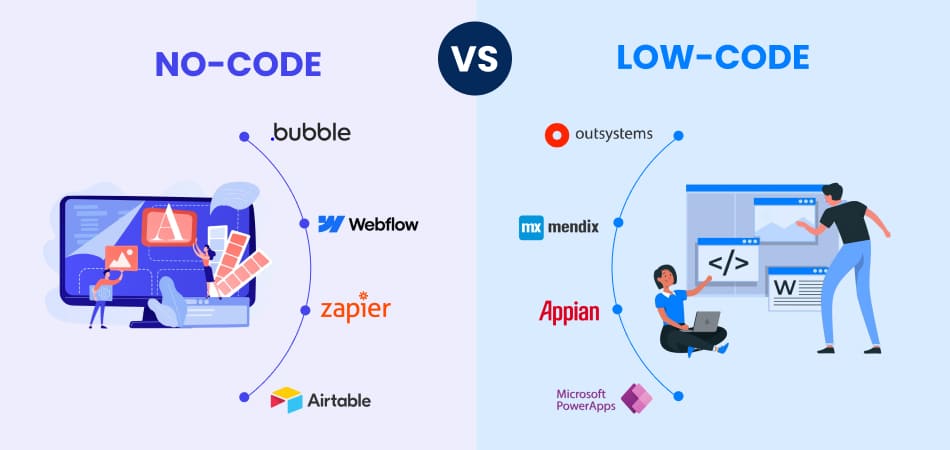Introduction
Outsourcing mobile app development has become a global trend, allowing businesses to leverage specialized skills, reduce costs, and accelerate time-to-market. Among the various outsourcing destinations, India stands out as a top choice due to its robust IT industry, a vast pool of talented developers, and cost-effective solutions. This comprehensive guide explores why outsourcing mobile app development to India is a strategic decision, the benefits it offers, key considerations, and future trends in this dynamic industry.
Why Outsource Mobile App Development to India?
India has firmly established itself as a global IT powerhouse, particularly in the realm of software and mobile app development. The following compelling reasons, backed by recent statistics, illustrate why outsourcing to India is a strategic choice for businesses:
- Growth of the IT Sector: India’s IT industry is on a rapid growth trajectory, projected to reach a staggering $350 billion by 2025, up from $194 billion in 2020 (Source: NASSCOM). This robust growth underscores the country’s expanding capabilities and resources in the tech sector. Additionally, the Indian IT and business services market is expected to grow at a CAGR of 8-10% from 2023 to 2025 according to NASSCOM (Source: tech article).
- Number of Developers: India boasts over 5.5 million IT professionals, with a significant portion specializing in mobile app development according to the NASSCOM. This vast talent pool ensures that businesses have access to highly skilled professionals who can deliver innovative and high-quality solutions.
- Cost Savings: One of the most compelling reasons to outsource to India is the substantial cost savings. Businesses can save up to 70% on development costs by outsourcing to India compared to in-house development in Western countries (Source: Deloitte). Businesses are able to spend resources more wisely thanks to this cost efficiency.
- Quality of Work: India is renowned for its high-quality work, with 85% of businesses reporting satisfaction with the quality of work and service according to Gartner. Additionally, 80% of US and European outsourcing firms ranked India as their number one outsourcing destination due to the superior quality delivered as per Tholons.
- Market Share in Global Outsourcing: India holds approximately 55% of the global market share in the IT outsourcing industry, making it the largest outsourcing destination (Source: Statista).
These statistics highlight India’s position as a premier destination for mobile app development outsourcing, combining economic advantages with access to a large and highly skilled workforce.
Advantages of Hiring India to Develop Mobile Apps
Outsourcing mobile app development to India offers numerous benefits that extend beyond cost savings:
- Access to Expertise: Indian developers are well-versed in the latest technologies and trends in mobile app development, ensuring innovative and cutting-edge solutions.
- Scalability: Indian firms can quickly scale up or down based on project requirements, providing flexibility in resource allocation.
- Focus on Core Business: By outsourcing, businesses can focus on their core competencies while leaving the technical aspects to experts.
- Reduced Time to Market: The time zone difference allows for continuous development cycles, accelerating the time to market for your mobile app.
- Comprehensive Support: Indian firms often provide end-to-end services, including post-launch support and maintenance.
Key Considerations for Outsourcing Mobile App Development to India
While outsourcing to India offers numerous advantages, it’s essential to consider the following factors to ensure a successful partnership:
- Define Your Requirements: Clearly outline your project requirements, including functionalities, design preferences, and timelines.
- Research and Shortlist: Conduct thorough research to identify potential development partners. Seek out businesses with a track record of success, satisfied customers, and pertinent experience.
- Communication: Ensure that the development team has strong communication skills and is proficient in English. Maintaining regular contact is essential to the project’s success.
- Cultural Understanding: While India has a diverse culture, understanding business practices and work culture can enhance collaboration.
- Legal Considerations: Establish clear contracts outlining project scope, deliverables, timelines, and payment terms. Consider intellectual property rights and data security.
Why Hiring a Mobile App Development Company in India is a Good Option
Hiring a mobile app development company in India is a strategic decision for businesses seeking high-quality, cost-effective solutions. Here’s a brief explanation in tabular form:
| Aspect | Explanation |
| Cost-Effectiveness | Indian businesses provide competitive prices without sacrificing quality. |
| Technical Expertise | Access to a vast pool of skilled developers proficient in various technologies and frameworks. |
| Quality Assurance | Adherence to international standards and certifications ensuring high-quality deliverables. |
| Flexibility | Ability to scale resources based on project requirements, ensuring flexibility and agility. |
| Communication | Strong proficiency in English, facilitating seamless communication and collaboration. |
| Time Zone Advantage | Leveraging time zone differences for round-the-clock development cycles and faster project completion. |
How to Choose the Right Mobile App Development Partner in India
Choosing the right development partner is crucial for the success of your mobile app project. Here are some of the stages that will guide you:
- Define Your Needs: Clearly articulate your project requirements, including the type of app, target audience, desired features, and budget.
- Research Potential Partners: Look for companies with a strong portfolio, relevant experience, and positive client reviews. Platforms like Clutch and GoodFirms can provide valuable insights.
- Assess Technical Proficiency: Ensure the company has expertise in the required technologies and frameworks. Request case studies or examples of similar projects they have completed.
- Evaluate Communication Skills: Effective communication is key to a successful outsourcing partnership. Assess the company’s communication skills through initial interactions and interviews.
- Consider Cultural Fit: Understanding the work culture and business practices of your potential partner can enhance collaboration and project success.
- Check Legal and Security Measures: Ensure the company follows robust data security practices and has clear contracts outlining project scope, deliverables, and payment terms.
Common Challenges and How to Overcome Them
Outsourcing mobile app development to India can come with challenges. There are some of the common ways and issues to tackle them:
- Communication Barriers: Differences in time zones and communication styles can lead to misunderstandings. Solution: Establish clear communication protocols, use collaboration tools, and schedule regular meetings.
- Quality Concerns: Ensuring consistent quality can be challenging. Solution: Choose a reputed company with a proven track record, request regular updates, and conduct thorough testing.
- Cultural Differences: Different cultural norms and business practices can impact collaboration. Solution: Foster mutual understanding and respect, and invest time in building a strong working relationship.
- Data Security: Protecting intellectual property and sensitive data is crucial. Solution: Ensure the company follows strict data security practices and sign non-disclosure agreements (NDAs).
Future Trends in Mobile App Development Outsourcing to India
The landscape of mobile app development outsourcing to India is continually evolving. Some of the future trends you will going to see below:
- Emergence of New Technologies: Indian developers are quickly adopting emerging technologies like AI, AR/VR, blockchain, and IoT, offering innovative solutions.
- Focus on User Experience (UX): With an increasing emphasis on user-centric design, Indian firms are investing in UX research and design to create intuitive and engaging apps.
- Growth of Hybrid and Cross-Platform Development: The demand for hybrid and cross-platform apps is rising, and Indian developers are gaining expertise in frameworks like React Native and Flutter.
- Increased Automation: The adoption of DevOps and automation tools is streamlining development processes, reducing time-to-market, and enhancing quality.
- Sustainability and Green IT: Indian companies are increasingly focusing on sustainable practices and green IT solutions, aligning with global trends towards environmental responsibility.
Conclusion
Outsourcing mobile app development to India offers numerous advantages, from cost savings and access to a vast talent pool to high-quality deliverables and faster time-to-market. By carefully considering key factors and choosing the right development partner, businesses can successfully navigate the challenges and leverage the benefits of outsourcing to India. As the industry continues to evolve, staying abreast of future trends will ensure that your mobile app development projects remain competitive and innovative.



